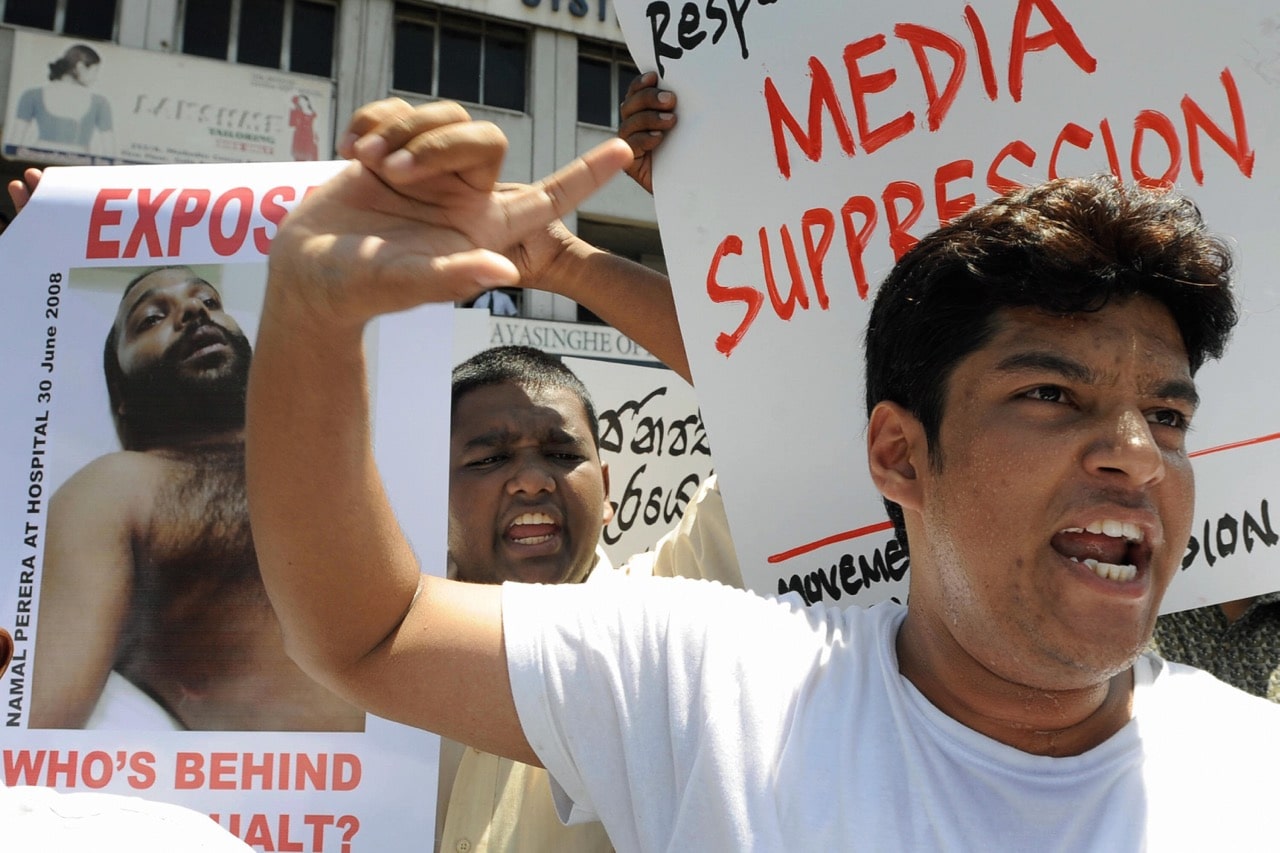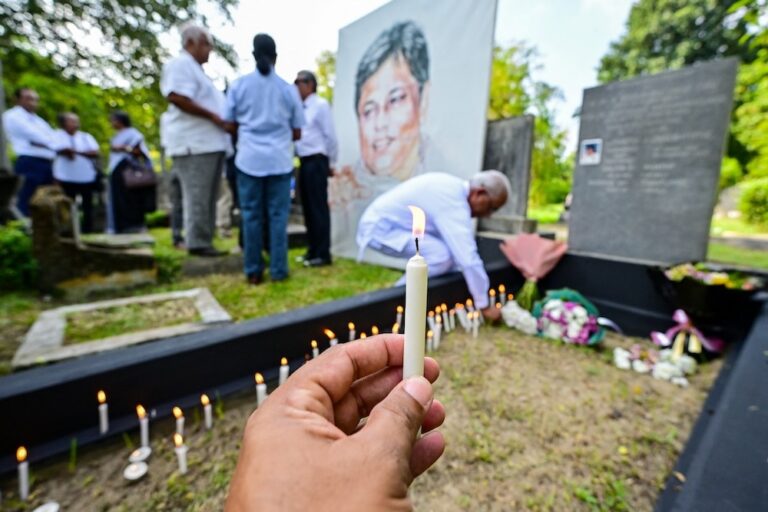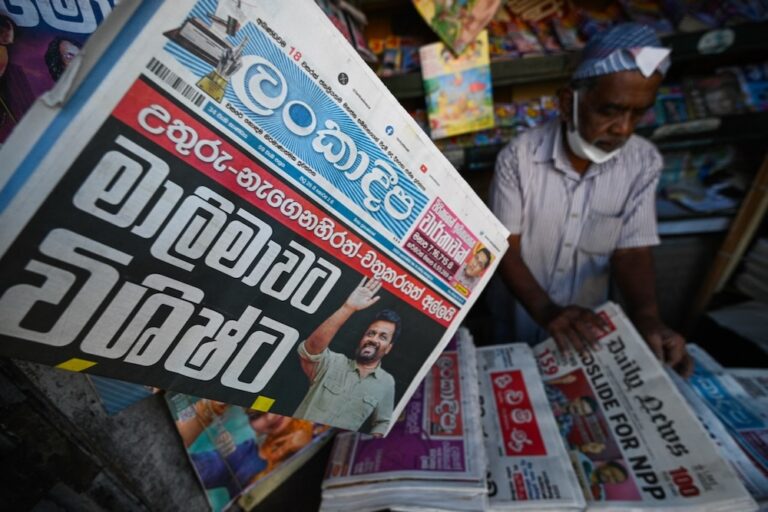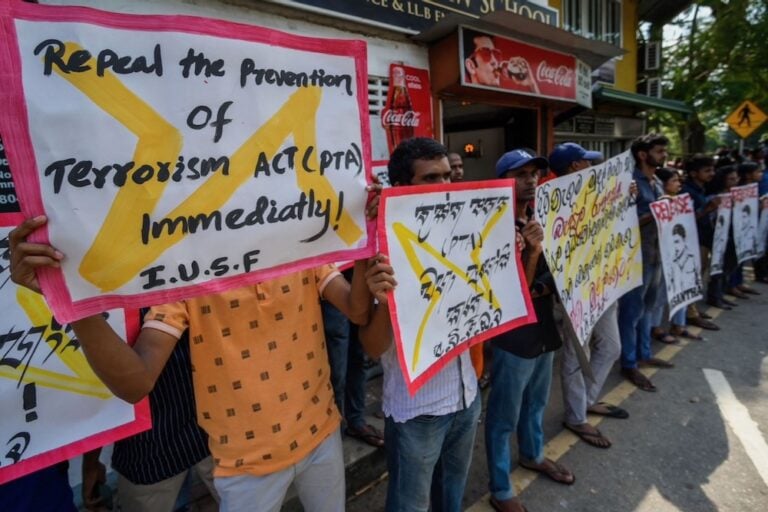Impunity for crimes against journalists remains a front-line issue in Sri Lanka.
The following is an excerpt of a 27 December 2017 CPJ Blog post by Steven Butler/CPJ Asia Program Coordinator.
It was the police line-up from hell. Forget all those “Law and Order” scenes where a victim stands anonymously behind a one-way mirror. Sri Lankan journalist Namal Perera had to stand eyeball-to-eyeball with 42 army intelligence officers in April, each of whom, Perera explained to me while demonstrating his fiercest tough-guy glare, faced him with a cold stare and arms folded aggressively.
Perera had to think back to that day nine years earlier, on June 30, 2008, when attackers on two motorcycles and in an unmarked white van chased him and his friend as they left the Sri Lanka Press Institute in Colombo, where he was deputy director at the time. He recalled how, as the van blocked their car, he looked straight into the eyes of its driver, before assailants bashed the windshield, beat him and his friend with clubs, and fled as a crowd gathered. After receiving assurances of protection from police last year, Perera picked out those eyes and one more pair from the lineup.
Sri Lanka’s 26-year civil war–during which CPJ documented repeated violence against journalists–ended in May 2009. Yet authorities have not secured a single conviction in the cases of 10 Sri Lankan journalists murdered there in retaliation for their work since 1992. This lack of progress led to Sri Lanka’s consistent appearance from 2008 to 2015 on CPJ’s annual Impunity Index, which highlights countries where journalists are slain and their killers go free.



